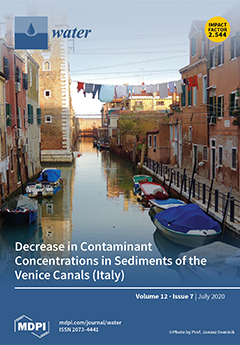The influence of contact area, caused by normal deformation, on fluid flow and solute transport through three-dimensional (3D) rock fractures is investigated. Fracture surfaces with different Hurst exponents (
H) were generated numerically using the modified successive random addition (SRA) method. By
[...] Read more.
The influence of contact area, caused by normal deformation, on fluid flow and solute transport through three-dimensional (3D) rock fractures is investigated. Fracture surfaces with different Hurst exponents (
H) were generated numerically using the modified successive random addition (SRA) method. By applying deformations normal to the fracture surface (Δ
u), a series of fracture models with different aperture distributions and contact area ratios (
c) were simulated. The results show that the contact area between the two fracture surfaces increases and more void spaces are reduced as deformation (Δ
u) increases. The streamlines in the rough-walled fractures show that the contact areas result in preferential flow paths and fingering type transport. The non-Fickian characteristics of the “early arrival” and “long tail” in all of the breakthrough curves (BTCs) for fractures with different deformation (Δ
u) and Hurst parameters (
H) were determined. The solute concentration distribution index (
CDI), which quantifies the uniformity of the concentration distribution within the fracture, decreases exponential as deformation (Δ
u) and/or contact area ratios (
c) increase, indicating that increased contact area can result in a larger delay rate of mass exchange between the immobile zone around the contact areas and the main flow channel, thus, resulting in a longer time for the solute to fill the entire fracture. The BTCs were analyzed using the continuous time random walk (CTRW) inverse model. The inverse modeling results show that the dispersion exponent
decreases from 1.92 to 0.81 as
c increases and
H decreases, suggesting that the increase in contact area and fracture surfaces enhance the magnitude of the non-Fickian transport.
Full article





